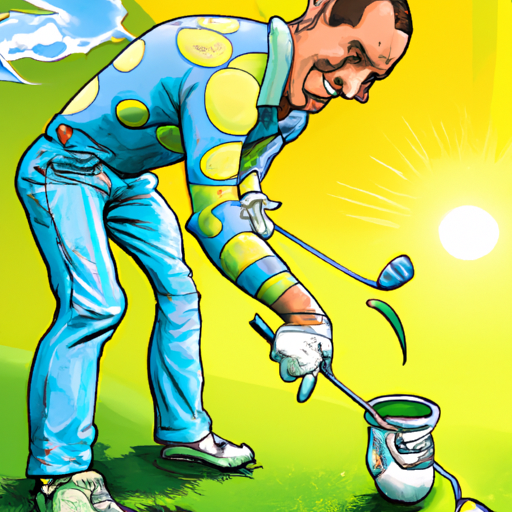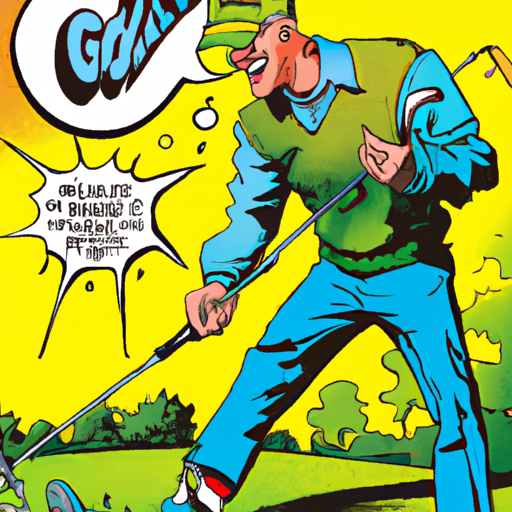Grip It and Rip It: How to Grip a Putter for Improved Golf Performance
Are you struggling with your golf game, feeling frustrated every time your ball veers off course? I've been there, and I know how it feels. The problem might not be your swing or your equipment, but something as simple as how you grip your putter.
But here's the good news: mastering the art of gripping a putter can transform your game and lead to improved golf performance.
In this guide, we'll explore how to grip a putter effectively, helping you to not only hit straighter putts but also lower your golf scores. So, are you ready to grip it and rip it?
Let's dive in!
The Art of Gripping a Putter
Hello fellow golf enthusiasts!
If you're anything like me, you've probably had your fair share of struggles on the golf course. Remember those embarrassing moments when your golf ball veered off into the rough or, worse, into a water hazard?
I've been there, and I know how frustrating it can be.
As a weekend golfer, I was inconsistent and often found myself humiliated on the first tee. I was desperate to lower my score and compete with more experienced golfers.
I had a fantasy about the magic trick that would give me a sensational day on the course. I wanted to tap into that fantasy, and so, I started buying new golf balls, drivers, and any other equipment that offered the hope it might take a few strokes off my game.
The reality was harsh. Despite all the new equipment, my game didn't improve as much as I'd hoped. I still struggled with my shots, especially my putts. I felt hopeless and overwhelmed. I was on the verge of giving up on my golfing dreams.
But then, I discovered something that changed everything: the importance of a proper putter grip. It was a game-changer for me. I realized that no amount of expensive equipment could compensate for a poor grip. It was like finding the missing piece of a puzzle.
And now, I'm here to share this revelation with you. Are you ready to transform your golf game?
Read on!
The Putter Grip Basics: Understanding the Foundation
Before we dive into the specifics of how to grip a putter, it's essential to understand what a putter grip is and why it matters.
A putter grip is the way you hold your putter when you're about to make a stroke. It's the only point of contact between you and the club, and it significantly influences the direction, speed, and accuracy of your putt.
The right grip can help you control your putter better, leading to more accurate and consistent putts. On the other hand, a poor grip can lead to a slew of problems, such as missed putts in all kinds of ways.
So, how do you grip a putter correctly?
Let's find out in the next section.
Mastering the Grip: A Step-by-Step Guide to Gripping a Putter
Gripping a putter correctly is not as complicated as it might seem. Here's a step-by-step guide to help you master the art of gripping a putter in a basic way:
1. Stand upright and let your arms hang down naturally.
2. Place the putter grip in the lifeline of your left palm (for right-handed golfers) so that it runs diagonally from the base of your little finger to the pad below your thumb.
3. Wrap your fingers around the grip, ensuring that the thumb of your left hand points straight down the front of the grip.
4. Place the lifeline of your right palm on the thumb of your left hand.
5. Wrap your right hand fingers around the grip, with the thumb pointing down the front of the grip.
6. Ensure that your palms are facing each other and that your wrists are not overly bent.
Remember, the grip should feel comfortable and natural. If it feels awkward or strained, you're probably doing it wrong.
But there are more ways for how to grip a putter…
Exploring Grip Styles: From Reverse Overlap to the Claw Putter Grip
There are several different ways to grip a putter, and the best one for you depends on your personal comfort and putting style.
Some of the most common putter grip styles include the reverse overlap grip, the cross-handed or lefthand low grip, and the claw grip. Each of these styles has its own set of advantages and disadvantages, and it's worth trying out each one to see which works best for you.
Answering Your Burning Questions
As I delved deeper into the world of golf, I came across several questions that many golfers, including myself, often ask.
Let's address some of these:
Which Kind of Grip is Best During Putting? - There's no one-size-fits-all answer to this question. The best grip during putting depends on your comfort, control, and consistency. Experiment with different grip styles to find the one that suits you best.
What is the Proper Putting Stroke? - A proper putting stroke is a smooth, pendulum-like motion where the shoulders do most of the work. The wrists and hands should remain passive to keep the putter face square to the target line.
Improving Your Grip: Practical Tips and Common Mistakes
Improving your grip can significantly enhance your putting performance. Here are some practical tips to help you along the way:
Practice regularly: Like any other skill, practice makes perfect. Spend time on the practice green working on your grip and stroke.
Use a training aid: Training aids can provide immediate feedback and help you develop a consistent and effective grip.
Get professional advice: Consider taking a lesson from a PGA professional. They can provide personalized advice and help you avoid common mistakes.
Speaking of mistakes, one common error I see among amateur golfers is gripping the putter too tightly. A tight grip can restrict your movement and lead to inconsistent putts. Aim for a grip pressure that's firm enough to control the putter but relaxed enough to allow a smooth stroke.
Choosing the Right Equipment for Putting
While a proper grip is crucial, having the right equipment can also make a significant difference in your putting game. From choosing the right putter to selecting the best golf balls for your style of play, every detail matters.
Your Journey to Lower Scores and Better Putting on the Greens
Mastering the art of gripping a putter is a game-changer. It has transformed my golf game, and I'm confident it can do the same for you.
Remember, the journey to lower scores and better putting on the greens begins with a proper grip.
So, grab your putter and start practicing today.
Frequently Asked Questions about Gripping a Putter
What is the correct way to grip a putter?
What is the correct way to grip a putter?
The basic correct way to grip a putter involves placing the putter grip in the lifeline of your left palm (for right-handed golfers) so that it runs diagonally from the base of your little finger to the pad below your thumb. Your fingers should wrap around the grip, with your thumb pointing straight down the front of the grip. Your right hand should mirror this position. But there are more ways…
What are the different types of putter grips?
What are the different types of putter grips?
There are several types of putter grips, including the reverse overlap grip, the cross-handed or left-hand low grip, and the claw grip. Each of these grips has its own advantages and can be chosen based on personal comfort and putting style.
How does a proper putter grip improve my game?
How does a proper putter grip improve my game?
A proper putter grip can significantly improve your control over the putter, leading to more accurate and consistent putts.
What is the proper putting stroke?
What is the proper putting stroke?
A proper putting stroke is a smooth, pendulum-like motion where the shoulders do most of the work. The wrists and hands should remain passive to keep the putter face square to the target line.
How can I improve my putter grip?
How can I improve my putter grip?
Improving your putter grip involves regular practice, using training aids for feedback, and getting professional advice. It's also important to avoid common mistakes such as gripping the putter too tightly, which can restrict your movement and lead to inconsistent putts.
What equipment should I use for putting?
What equipment should I use for putting?
Choosing the right putter and golf balls for your style of play can make a significant difference in your putting game. It's also worth considering the use of a golf glove for additional grip and control.

















